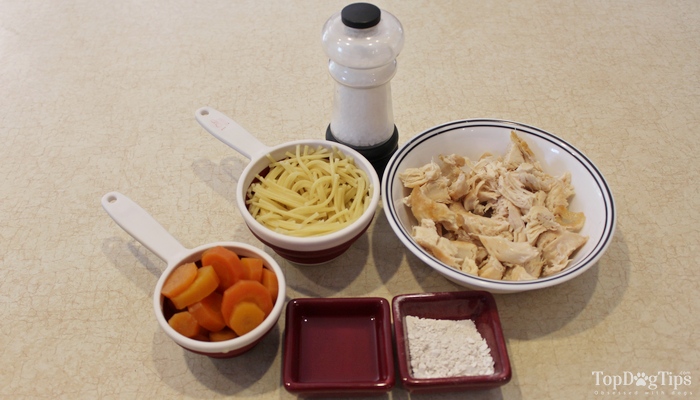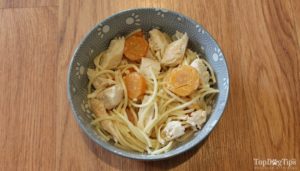If your dog has been diagnosed with diabetes, you've probably already had an in-depth conversation with your vet about changing her activity level, diet and possibly even adding daily medication to her routine. Making your own dog food is the absolute best way to cater to your pet's individual health needs. Ask your veterinarian if this homemade dog food for diabetic dogs is right for your pooch.
It's important to consult an expert before changing your dog's diet, especially if you're making adjustments to his food to help treat a medical condition such as canine diabetes. Homemade dog food for diabetic dogs is a great option to help pets with health issues, but if you don't feed a balanced diet you'll be doing more harm than good.
Diabetes can lead to many other health issues if not cared for properly. Some of these health problems include:
- kidney problems
- urinary tract issues
- liver disease
…and many other complications. In fact, life threatening conditions like thyroid problems and Cushing's Disease have been linked to Diabetes.
It's important to work with your vet and/or a canine nutritionist to find the right treatment for your pet. The treatment chosen will depend on the severity of the disease, your dog's weight, his age and other factors that your vet will take into account. Perhaps this homemade diabetic dog food recipe will fit into his treatment plan.
MORE RECIPES HERE: Homemade Dog Food & Treats Recipes
Homemade Dog Food for Diabetic Dogs Recipe
 Ingredients
Ingredients
- 1 cup cooked pasta (I used spaghetti, but you can use any pasta)
- 1 1/4 cup chicken
- 1/2 tbsp. corn oil
- 1/2 tsp. salt
- 1/2 cup carrots
- 1 tsp. dicalcium phosphate
LISTEN: Podcast on Dealing With Canine Diabetes ft. Rachel Poulin, RVT
Directions
As I explain in the video guide above, this homemade diabetic dog food is extremely easy to make. There isn't much prep work involved, and it's a limited ingredient recipe.
First, cook the chicken in the corn oil. Next, boil the carrots and pasta. Finally, mix everything together in a medium-sized mixing bowl.
That's it!
 Once the food cools, you can serve it to your pup. The serving size is about 1/2 cup per 20 pounds of weight. Just be sure to check with your vet or a canine nutritionist to ensure that your dog is getting enough calories every day. If your dog lives an active lifestyle, he may require 3/4 cup for every 20 pounds of weight.
Once the food cools, you can serve it to your pup. The serving size is about 1/2 cup per 20 pounds of weight. Just be sure to check with your vet or a canine nutritionist to ensure that your dog is getting enough calories every day. If your dog lives an active lifestyle, he may require 3/4 cup for every 20 pounds of weight.
Also, a note on dicalcium phosphate. This is a supplement that will add phosphorus, calcium and fluorine to your pet's diet. It's important to check with your veterinarian to make sure that your dog actually needs this added to his diet.
It is commonly recommended for diabetic dogs, but your pet may not need dicalcium phosphate added to his food. When feeding a homemade diet, it's best to vary the recipes that you use in order to provide a balanced diet. If your dog is getting enough calcium from his diet overall, adding this supplement could actual cause hypercalcemia (too much calcium in the system).
READ NEXT: Homemade Dog Food vs. Commercial Brands – What's Better for Dogs?











